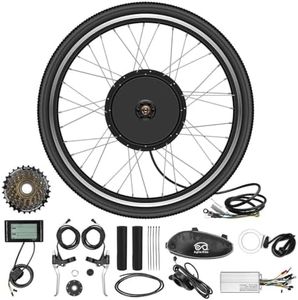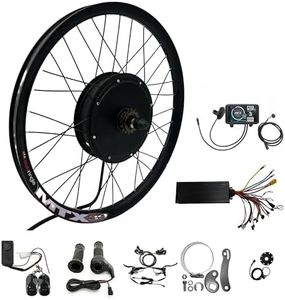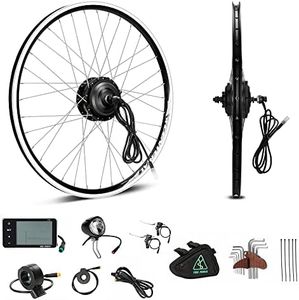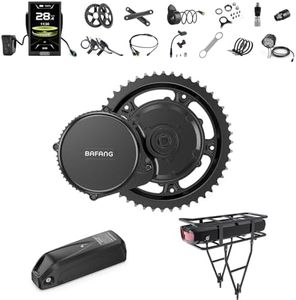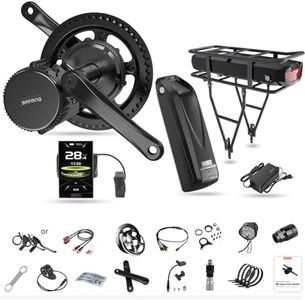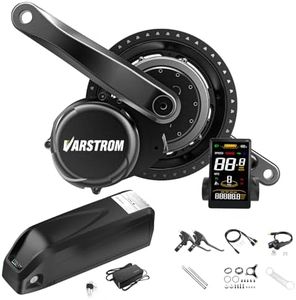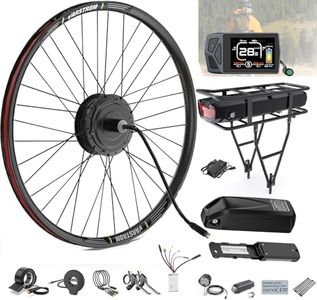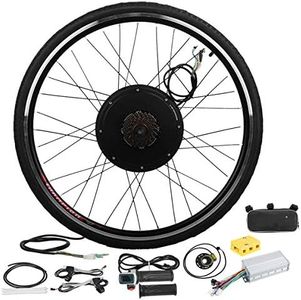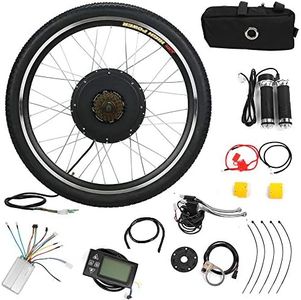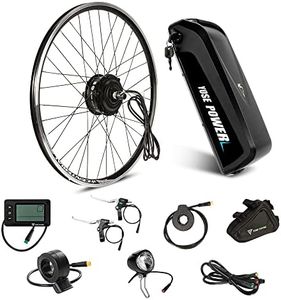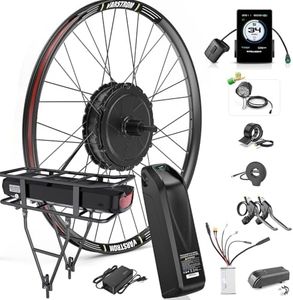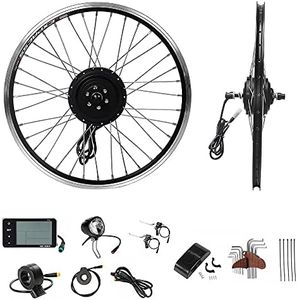We Use CookiesWe use cookies to enhance the security, performance,
functionality and for analytical and promotional activities. By continuing to browse this site you
are agreeing to our privacy policy
10 Best Ebike Conversion Kits
From leading brands and best sellers available on the web.Recommended lists
Buying Guide for the Best Ebike Conversion Kits
Choosing the right e-bike conversion kit can transform your regular bicycle into an efficient, eco-friendly mode of transportation. To make the best choice, it's important to understand the key specifications and how they align with your needs. Here are the main factors to consider when selecting an e-bike conversion kit.Motor TypeThe motor is the heart of your e-bike conversion kit. There are three main types: hub motors, mid-drive motors, and friction drive motors. Hub motors are located in the wheel hub and are great for flat terrains and casual riding. Mid-drive motors are positioned at the bike's crank and offer better balance and efficiency, making them ideal for hilly terrains and off-road biking. Friction drive motors are less common and attach to the bike's tire, providing a simpler installation but less power. Choose a motor type based on your riding terrain and desired performance.
Motor PowerMotor power, measured in watts (W), determines how much assistance the motor provides. Common power ratings are 250W, 500W, and 750W. A 250W motor is sufficient for flat terrains and light commuting. A 500W motor offers more power for moderate hills and longer rides. A 750W motor is suitable for steep hills and heavier loads. Consider your typical riding conditions and how much assistance you need when selecting motor power.
Battery CapacityBattery capacity, measured in watt-hours (Wh), affects how far you can travel on a single charge. Common capacities range from 300Wh to 700Wh. A 300Wh battery is adequate for short commutes and casual rides. A 500Wh battery provides a good balance for medium distances and moderate use. A 700Wh battery is ideal for long-distance rides and frequent use. Think about your average ride length and frequency to determine the right battery capacity for you.
VoltageVoltage, measured in volts (V), impacts the overall power and efficiency of the motor. Common voltages are 36V and 48V. A 36V system is typically sufficient for casual riding and flat terrains. A 48V system offers more power and efficiency, making it better for hilly terrains and higher speeds. Choose a voltage that matches your performance needs and riding conditions.
Installation ComplexityInstallation complexity varies between kits. Some kits are designed for easy installation with minimal tools and technical knowledge, while others may require more mechanical skills and time. If you are not mechanically inclined, look for kits that offer straightforward installation with clear instructions. If you enjoy DIY projects and have the necessary tools, you might opt for a more complex kit that offers greater customization.
CompatibilityCompatibility refers to how well the conversion kit fits with your existing bicycle. Check the specifications of the kit to ensure it matches your bike's wheel size, frame type, and brake system. Some kits are designed to be universal, while others are specific to certain bike types. Ensure the kit you choose is compatible with your bike to avoid any installation issues.
Additional FeaturesAdditional features can enhance your riding experience. These may include pedal assist sensors, throttle controls, LCD displays, and regenerative braking. Pedal assist sensors provide motor assistance based on your pedaling effort, while throttle controls allow you to control the motor power manually. LCD displays show important information like speed, battery level, and distance. Regenerative braking helps recharge the battery when braking. Consider which features are important to you and how they will improve your ride.
